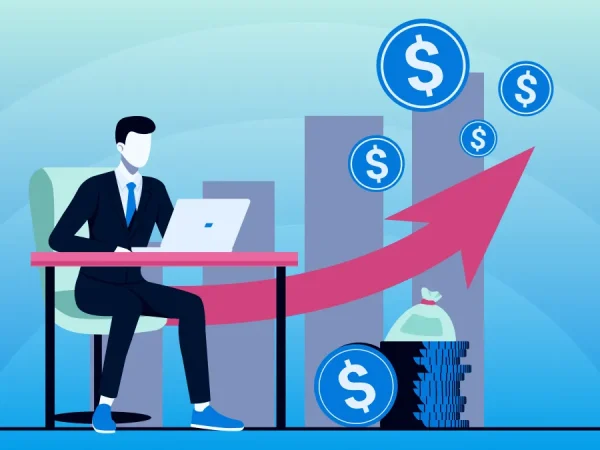Navigating Student Loans: Repayment Options and Strategies

With the rising cost of education, many students rely on student loans to fund their college or university studies. While these loans provide access to higher education, they also come with the responsibility of repayment. Navigating the complex landscape of student loan repayment can be overwhelming, but with the right knowledge and strategies, borrowers can effectively manage their loans. This article explores various repayment options and strategies to help students and graduates tackle their student loan debt.
Repayment Options
1. Standard Repayment Plan
The standard repayment plan is the most common and straightforward option. Under this plan, borrowers make fixed monthly payments over a period of 10 years. This plan ensures that the loan is paid off within a reasonable time frame, but it may result in higher monthly payments compared to other options. If borrowers can afford the monthly payments, this plan is an excellent choice as it minimizes the overall interest paid.
2. Income-Driven Repayment Plans
Income-driven repayment plans are designed to make loan repayment more manageable for borrowers with limited income. These plans calculate the monthly payment based on the borrower’s income and family size, ensuring that the payment amount remains affordable. There are several types of income-driven plans, including Income-Based Repayment (IBR), Pay As You Earn (PAYE), Revised Pay As You Earn (REPAYE), and Income-Contingent Repayment (ICR). Each plan has its own eligibility criteria and terms, so borrowers should research and choose the one that best suits their financial situation.
a) Income-Based Repayment (IBR)
IBR caps the monthly payment at 10-15% of the borrower’s discretionary income, depending on when the loan was borrowed. After 20 or 25 years of consistent payments, the remaining balance may be forgiven, but it will be taxed as income in the year of forgiveness.
b) Pay As You Earn (PAYE) and Revised Pay As You Earn (REPAYE)
PAYE and REPAYE plans also cap monthly payments at 10% of discretionary income. PAYE is available to newer borrowers, while REPAYE is open to all borrowers. Both plans offer forgiveness after 20 years for undergraduate loans and 25 years for graduate loans, with the forgiven amount taxed as income.
c) Income-Contingent Repayment (ICR)
ICR sets monthly payments at either 20% of discretionary income or the amount paid on a fixed 12-year plan. Forgiveness is available after 25 years of payments, and the forgiven amount is taxable.
3. Graduated Repayment Plan
The graduated repayment plan starts with lower monthly payments that increase every two years over a 10-year term. This option is suitable for borrowers who anticipate an increase in income over time. While the monthly payments start lower than those under the standard plan, they will gradually rise, allowing borrowers to adjust as their income grows.
Repayment Strategies
1. Make Extra Payments
Paying more than the required minimum payment each month can significantly reduce the total interest paid over the life of the loan. Even small additional payments can make a difference in the long run. By allocating extra funds towards the principal amount, borrowers can accelerate their loan payoff and save money on interest.
2. Refinance or Consolidate Loans
Refinancing or consolidating student loans can be a useful strategy to simplify repayment and potentially obtain a lower interest rate. By combining multiple loans into a single loan or refinancing with a new lender, borrowers may secure more favorable terms, which can help save money over the life of the loan.
a) Loan Consolidation
Loan consolidation involves combining multiple federal loans into one new loan. This can simplify the repayment process by eliminating the need to manage multiple loan payments each month. Additionally, loan consolidation may also extend the repayment term, resulting in lower monthly payments. However, it’s important to note that loan consolidation does not typically lower the interest rate. Instead, the interest rate is determined by taking the weighted average of the interest rates on the loans being consolidated.
b) Loan Refinancing
Loan refinancing, on the other hand, involves obtaining a new loan from a private lender to pay off existing student loans. The new loan often comes with a lower interest rate, which can save borrowers money over time. Refinancing also provides the opportunity to adjust the repayment term and potentially reduce the monthly payment amount. However, it’s important to carefully consider the terms and conditions of the new loan, as refinancing federal loans with a private lender means losing access to federal loan benefits such as income-driven repayment plans and loan forgiveness options.
Conclusion
Navigating student loan repayment can be challenging, but with a clear understanding of the available options and effective strategies, borrowers can successfully manage their debt. Standard repayment plans, income-driven plans, and graduated repayment plans offer flexibility and tailored approaches to fit different financial circumstances. Additionally, making extra payments, refinancing, and loan consolidation can help borrowers save money and simplify their repayment journey.
It’s crucial for borrowers to assess their unique situations and choose the repayment option and strategy that aligns with their financial goals and capabilities. By staying informed and proactive, borrowers can take control of their student loan repayment, paving the way to a more financially secure future.
FAQs
Q1: Can I switch between different repayment plans?
Yes, in most cases, borrowers have the option to switch between different repayment plans. However, the availability and eligibility criteria for switching plans may vary. It’s important to contact your loan servicer or lender to discuss your options and understand any potential implications before making a switch.
Q2: Are there any tax implications associated with student loan repaymen
While student loan repayment itself does not have direct tax implications, there are certain instances where loan forgiveness may be considered taxable income. For example, under income-driven repayment plans, any remaining balance forgiven after the specified
Read More: The Power of Compounding: How Small Investments Can Lead to Big Returns











